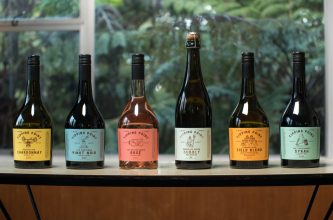Melanie Carroll Stuff | Oct 10 2022
 French wine producer Edmond de Rothschild Heritage Wines has bought Central Otago vineyard Akarua Estate, which it hopes will eventually produce 60,000 bottles a year of premium organic pinot noir.
French wine producer Edmond de Rothschild Heritage Wines has bought Central Otago vineyard Akarua Estate, which it hopes will eventually produce 60,000 bottles a year of premium organic pinot noir.
Bordeaux-based Edmond de Rothschild Heritage Wines received Overseas Investment Office approval to buy the 52-hectare estate, with 34.5ha of vines, in Central Otago’s Bannockburn, along with the Akarua Estate vineyard from New Zealand company the Skeggs Group.
Ariane de Rothschild, president of the Edmond de Rothschild Group, which also owns Marlborough vineyard Rimapere, said the region’s soil was world-famous for its exceptional growing conditions for pinot noir.
She said that the terroir, or environment, at Bannockburn was on par with the Burgundy region in Eastern France.
 “The addition of our second New Zealand winery is part of our wider strategy to develop a portfolio of premium international wines from exceptional terroirs.
“The addition of our second New Zealand winery is part of our wider strategy to develop a portfolio of premium international wines from exceptional terroirs.
“Central Otago’s international reputation for pinot noir provides a unique opportunity for us to complete our range and move into the production of organic wines – one of the fastest growing categories,” she said.
Winemaker Ann Escalle, who was technical director at Rimapere before moving to Akarua Estate, said the soil had all the elements they were looking for, and the slope was gentle enough for the vines to be able to develop well.

The region’s climate was known for its hot and cold extremes, but the site was not too harsh. At the same time, it was dry and windy enough to keep diseases away.
“We think that what we have here at Akarua is really top potential, and we can bring it to the world. We would like to produce some of the best pinot noirs in the world because it’s possible,” she said.
The vineyard, which produced about 80% pinot noir along with small amounts of chardonnay and riesling, was not organic yet, but work was starting on converting it immediately.
When fully converted and organically certified, the vineyard would produce more than 60,000 bottles of organic wines annually for the international and domestic markets.

The wines would continue to be produced under the Akarua brand. The Akarua Estate vineyard was founded in 1996 by former Dunedin mayor Sir Clifford Skeggs.
Skeggs Group managing director David Skeggs said the new owners had significant global influence and networks and would bring new opportunities for the Central Otago wine industry.
The Skeggs Group would continue to produce its Rua brand from its 90 hectares of established vineyards in the Bannockburn and Pisa sub-regions.
The nine vineyards owned by Edmond de Rothschild Heritage in France, Spain, South Africa, Argentina and New Zealand produced 3.5 million bottles of wine a year.

























 The first winemaker attracted to Central Otago was John Desiré Feraud who came to the area during the Dunstan gold rush of 1862, and after investing in a claim became rich overnight. Feraud, who was from a French winemaking family, recognised the potential for grape growing, and leased 40 hectares in Clyde where he planted the first wine grapes in 1864.
The first winemaker attracted to Central Otago was John Desiré Feraud who came to the area during the Dunstan gold rush of 1862, and after investing in a claim became rich overnight. Feraud, who was from a French winemaking family, recognised the potential for grape growing, and leased 40 hectares in Clyde where he planted the first wine grapes in 1864.
